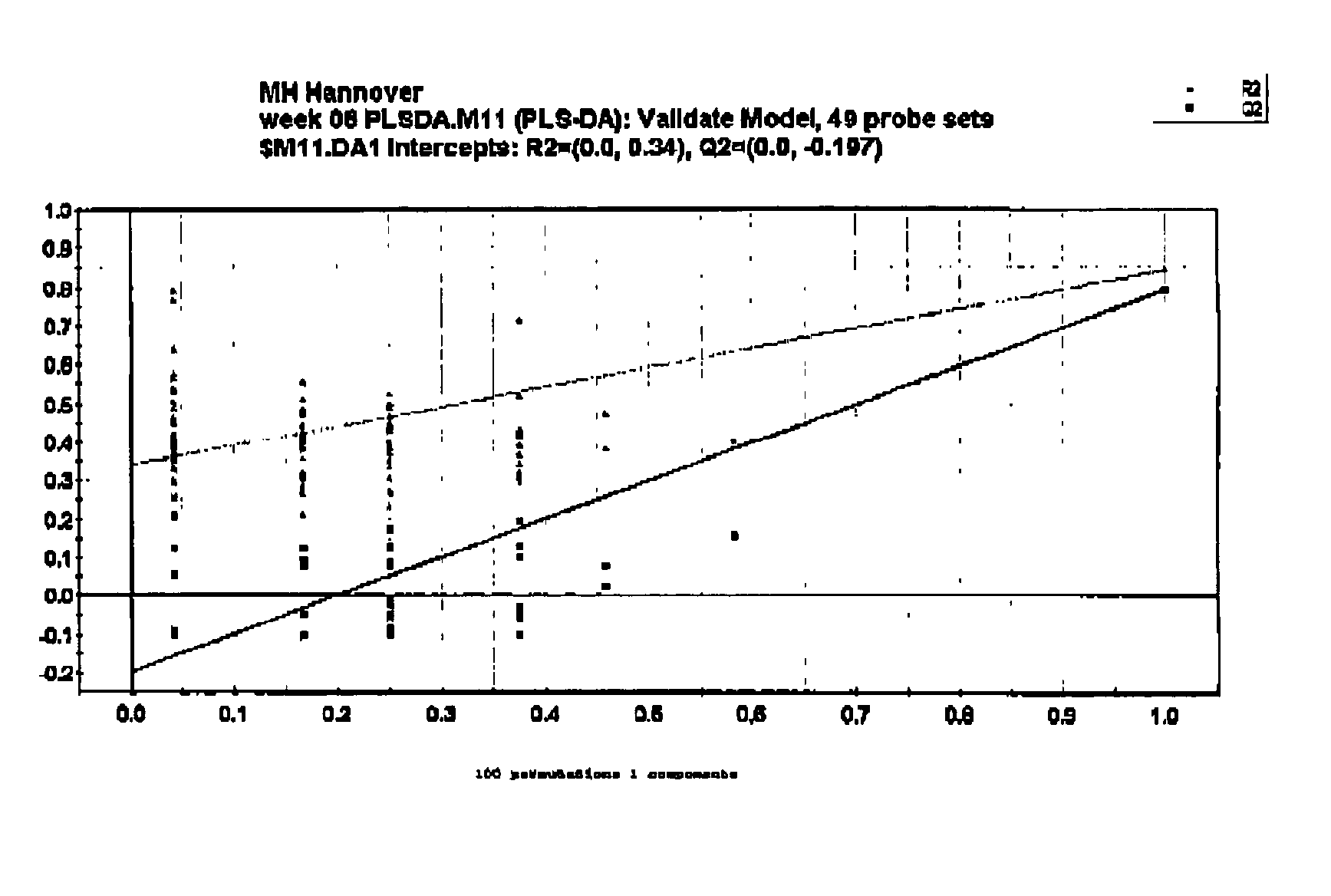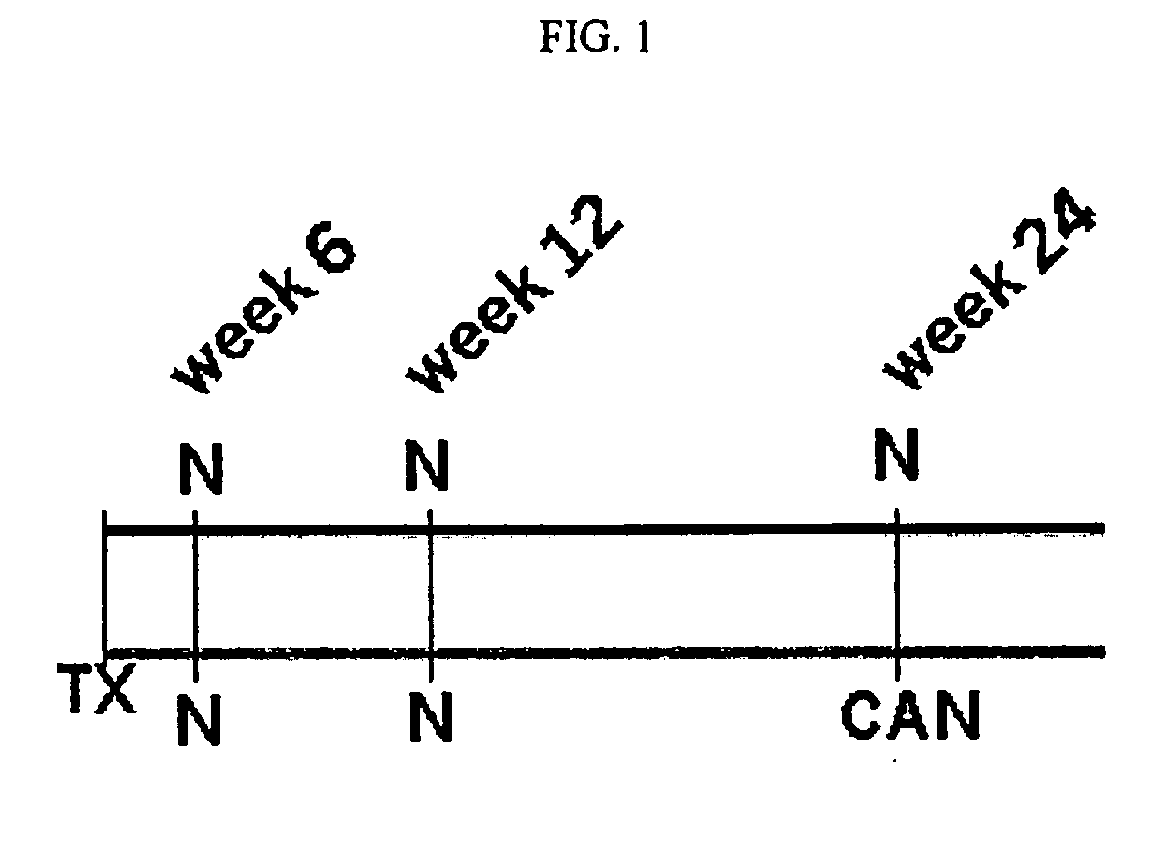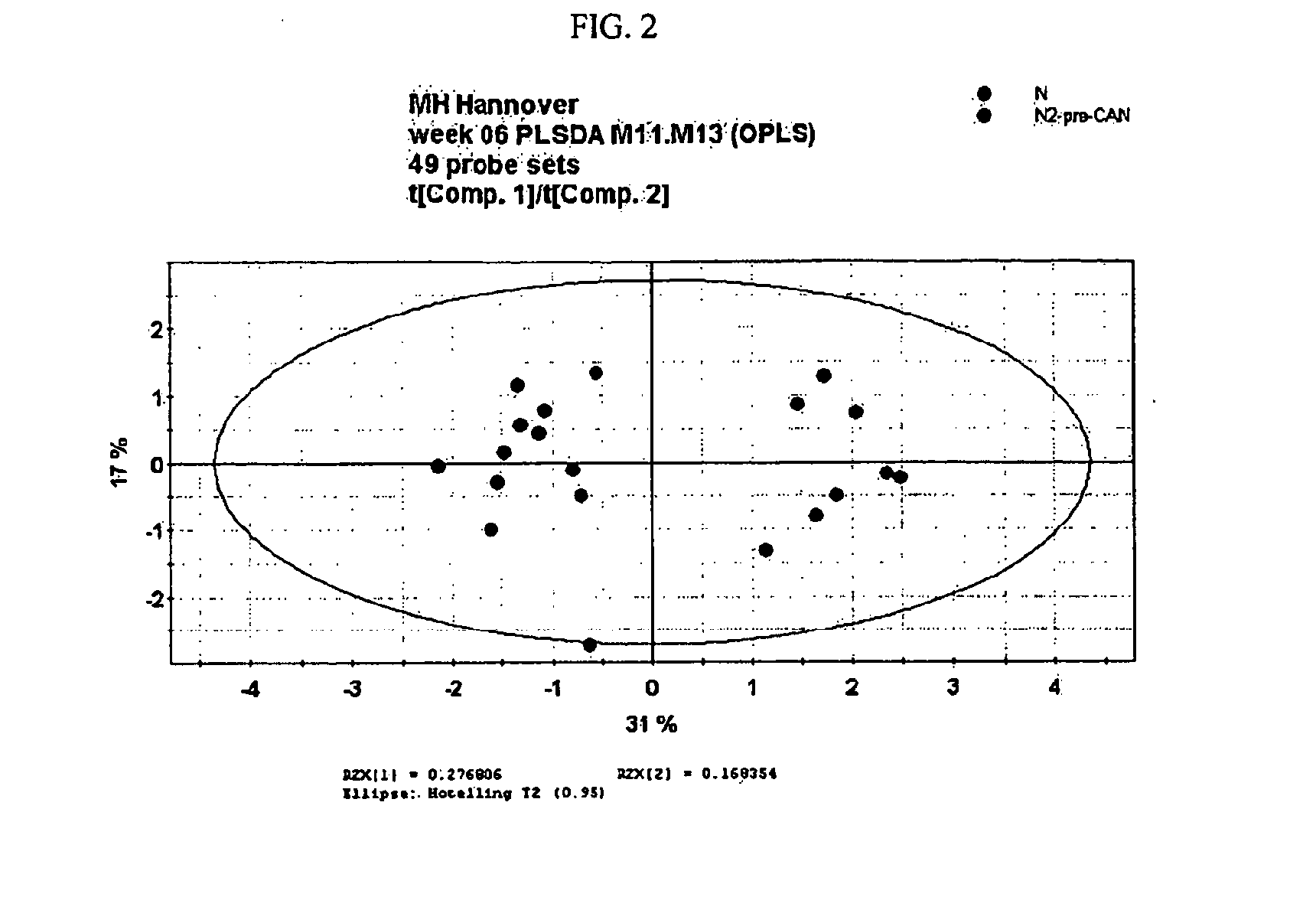Predictive biomarkers for chronic allograft nephropathy
a biomarker and allograft technology, applied in the field of analytic testing of tissue samples in vitro, can solve the problems of early graft failure, chronic rejection remains a common and serious problem, and graft failur
- Summary
- Abstract
- Description
- Claims
- Application Information
AI Technical Summary
Benefits of technology
Problems solved by technology
Method used
Image
Examples
example 1
Identifying Biomarkers Predictive of Chronic / Sclerosing Allograft Nephropathy
[0151]1 Introduction and Purpose of the Studies
[0152]Histopathological evaluation of biopsy tissue is the gold standard of diagnosis of chronic renal allograft nephropathy (CAN), while prediction of the onset of CAN is currently impossible. Molecular diagnostics, like gene expression profiling, may aid to further refine the BANFF 97 disease classification (Racusen L C, et al., Kidney Int. 55(2):713-23 (1999)), and may also be employed as predictive or early diagnostic biomarkers when applied at early time points after transplantation when by other means graft dysfunction is not yet detectable. In the present study, gene expression profiling was applied to biopsy RNA extracted from serial renal protocol biopsies from patients which showed no overt deterioration of graft function within about at least one year after transplantation, and patients which had overt chronic allograft nephropathy (CAN) as diagnosed...
PUM
| Property | Measurement | Unit |
|---|---|---|
| Northern blot analysis | aaaaa | aaaaa |
| real time quantitative PCR | aaaaa | aaaaa |
| time | aaaaa | aaaaa |
Abstract
Description
Claims
Application Information
 Login to View More
Login to View More - R&D
- Intellectual Property
- Life Sciences
- Materials
- Tech Scout
- Unparalleled Data Quality
- Higher Quality Content
- 60% Fewer Hallucinations
Browse by: Latest US Patents, China's latest patents, Technical Efficacy Thesaurus, Application Domain, Technology Topic, Popular Technical Reports.
© 2025 PatSnap. All rights reserved.Legal|Privacy policy|Modern Slavery Act Transparency Statement|Sitemap|About US| Contact US: help@patsnap.com



